Mad Hedge Biotech & Healthcare Letter
March 23, 2021
Fiat Lux
FEATURED TRADE:
(THIS ISN’T THE TIME TO HIT THE PANIC BUTTON)
(AZN), (PFE), (BNTX), (ALXN), (MRK), (RHHBY)

Mad Hedge Biotech & Healthcare Letter
March 23, 2021
Fiat Lux
FEATURED TRADE:
(THIS ISN’T THE TIME TO HIT THE PANIC BUTTON)
(AZN), (PFE), (BNTX), (ALXN), (MRK), (RHHBY)

Everybody will have heard about the issue in Europe these days, with more countries suspending dosing of the COVID-19 vaccine from AstraZeneca (AZN) and Oxford.
However, I think gaining clarity over the situation is important.
I haven’t been the greatest advocate of the AstraZeneca vaccine because its initial rollout was, to put it mildly, botched.
At the time, it was difficult to determine just how efficacious the vaccine, AZD1222, really was, and the latest figure I heard is that it’s 60% effective.
While the European Medicines Agency declared AZD1222 as safe, many member states of the EU seem to disagree, pointing out the reports of blood clotting issues after dosing.
I can see several apparent levels of this concern, but the most pressing, clearly, is medical.
The main problem that the experts are figuring out isn’t about the fairly common blood clots, which actually occurred at background levels and can generally be observed among elderly folks.
Their focus is the extremely rare autoimmune disorder that’s triggered when the body starts aggressively destroying the platelets needed for clotting.
That particular condition is hard to treat and can even be fatal.
Although they haven’t zeroed in on the specifics of the problem just yet, the experts agree that the blood clot issue is caused by some sort of overreaction in the immune system.
The stimulus for this reaction is still under review, but there’s a growing consensus that it could be genetic predisposition in a rare group of people.
This could be the same case as the doctor in Florida who died because of his immune system’s overreaction, which was triggered by the vaccine from Pfizer (PFE) and BioNTech (BNTX).
That’s not conclusive though, since it’s the only case cited in the United States.
The experts also pointed out that the condition is extremely rare, which was why it was not observed even in the Phase 3 trial of AZD1222.
While this is clearly a medical issue, there’s also an image issue for AstraZeneca to think about. How does this negative news on AZD1222 affect the stock?
Here’s a key point to keep in mind when analyzing AstraZeneca’s potential: The company is not selling AZD1222 for a profit while we’re going through the pandemic.
That means that suspending the dosing of AZD1222 won’t hurt AstraZeneca’s profit for 2021.
However, that doesn’t mean that AZD1222 has absolutely no effect on the company’s standing.
If anything, AZD1222 is an earnings opportunity for AstraZeneca in the future because the company’s expected to raise prices and generate a profit after the pandemic.
To underscore this goal, AstraZeneca has actually been ramping up capacity to manufacture at least 3 billion doses every year.
Considering this target, AstraZeneca is clearly signaling that it has the infrastructure to become a dominant player—if not the ultimate market leader—in the coronavirus vaccine sector.
If the issues with AZD1222 are resolved, then AstraZeneca holds a product that could rake in billions in revenue in the years to come.
Notably, AstraZeneca’s shares haven’t budged much regardless of the vaccine news released.
Since April 30, which was the day that the company announced its plans to join the COVID-19 vaccine race, AstraZeneca stock has fallen by roughly 6%.
In the past 11 months, which was filled with ups and downs for AZD1222, and up until the European countries suspended dosing in March 2021, the shares barely changed.
On the whole, AstraZeneca isn’t exactly known for massive one-year gains.
Rather, investors enjoy long-term wins, as seen in the company’s impressive 75% climb in over the past five years.
So far, AstraZeneca has 38 candidates in its pipeline queued for Phase 1 trials, 54 are slated for Phase 2, and 41 are lined up to go through Phase 3.
To fight off stagnation, AstraZeneca acquired biotechnology company Alexion Pharmaceuticals (ALXN) for a whopping $39 billion last December.
This deal offers a major expansion in AstraZeneca’s portfolio because Alexion brings with it its famed rare disease drug Soliris, which generates approximately $1 billion in revenue every quarter.
For 2020 alone, Alexion was estimated to add up to $5.95 billion in sales.
By 2025, AstraZeneca projects that Alexion will be on track to consistently contribute double-digit growth in its annual revenue.
It’s reasonable to say that AstraZeneca is one of the frontrunners in the COVID-19 race.
However, the past weeks have seen the company’s woes multiply due to questions on AZD1222’s side effects.
It’s worth reminding ourselves though why huge biopharmaceutical companies like AstraZeneca, Pfizer, Merck (MRK), and Roche (RHHBY) are not sensitive to these vaccine updates: They do not rely on their vaccine revenue alone for growth.
AstraZeneca markets an extensive array of products, which include eight blockbuster drugs.
In 2020, the company’s sales climbed by 10% to reach over $25 billion year-over-year.
Therefore, the reports on AstraZeneca’s AZD1222 isn’t a cause for alarm. The company’s overall portfolio is well-positioned to drive profit higher in the next several years.
More importantly, if AstraZeneca’s track record serves as any indication, then long-term shareholders should remain optimistic about the company’s growth trajectory.
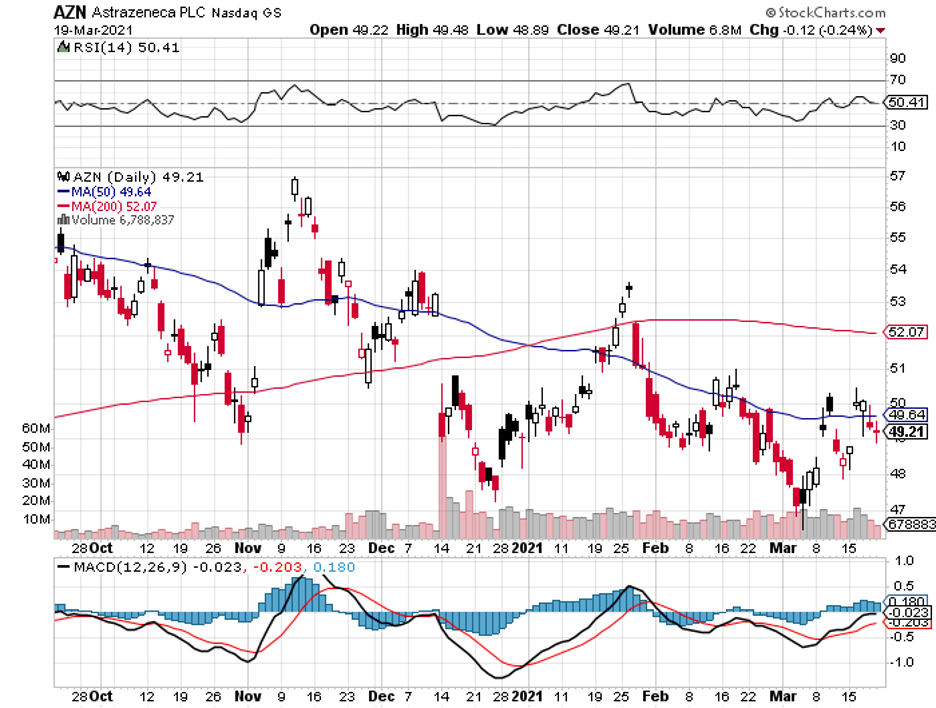
Mad Hedge Biotech & Healthcare Letter
January 5, 2021
Fiat Lux
FEATURED TRADE:
(ANNOUNCING THE MAD HEDGE BIOTECH AND HEALTH CARE TRADE ALERT SERVICE)
(WHY ASTRAZENECA IS NOT JUST A COVID PLAY)
(AZN), (PFE), (MRNA), (JNJ), (ALXN)

The latest update on AstraZeneca’s (AZN) COVID-19 vaccine candidate has received a lot of attention from investors.
The company and its research partner Oxford University recently landed a deal to deliver 2 million doses of their COVID-19 vaccine weekly to the UK starting mid-January.
This is on top of the massive deal AstraZeneca sealed with India for emergency use approval as well.
While these are exciting updates, the reality is that AstraZeneca aims to market its COVID-19 vaccine candidate at cost.
As the race to supply COVID-19 vaccine to the world continues, it’s undeniable that a huge chunk of the roughly $40 billion COVID-19 revenue would go to the current frontrunners Pfizer (PFE) and Moderna (MRNA).
This is particularly true for Moderna’s case as the biotechnology company employed a revolutionary technology to create its COVID-19 vaccine candidate.
The success of its vaccine so far is indicative of future treatments and even vaccines based on the mRNA technology. This offers incredible promise not only for the current pandemic but for a myriad of rare diseases.
In comparison, AstraZeneca and even Johnson & Johnson (JNJ) opted for more traditional approaches for their COVID-19 vaccine candidates.
While these are also promising, it’s likely that these companies do not anticipate their COVID-19 programs to be the profit centers for 2021.
In fact, there are a lot of good reasons to buy AstraZeneca shares right now – and its COVID-19 vaccine candidate didn’t make the top of the list.
One of the main reasons AstraZeneca deserves a spot in your portfolio is the fact that it already has an established and successful pipeline.
While its COVID-19 program definitely boosted its popularity, this effort was not altogether necessary in terms of the company’s overall growth.
Despite the pandemic that brought down businesses in 2020, including commercial launches of new drugs, sales of AstraZeneca’s new products rose 9% year over year.
In fact, throughout the past 12 months, the company managed to generate approximately $1.9 billion in free cash flow.
In the first nine months of 2020, the company reported core earnings growth of 13% year over year, with a 2.8% dividend.
To close the year with a bang, AstraZeneca announced its $39 billion acquisition of one of our closely-watched biotechnology companies: Alexion Pharmaceuticals (ALXN).
Although this initially didn’t bode well with its investors, AstraZeneca is set to gain the blockbuster franchise composed of the Soliris-Ultomiris duo.
At its current growth rate, Alexion’s prized Soliris franchise is estimated to generate at least $6 billion in sales in 2021.
Meanwhile, Soliris’ longer-lasting version, Ultomiris, which was launched in 2018, is projected to rake in almost twice in profits this year.
Both Soliris and Ultomiris require regular treatment, with the former administered every other week while the latter is an infusion needed every other month.
Although there are less expensive biosimilar options already making the in the market today, particularly for Soliris, the move of Alexion to develop Ultomiris as a longer-lasting and more convenient version all but obliterates any future competition.
Simply put, AstraZeneca will have a monopoly of this market once the acquisition is complete by mid-2021.
Speaking of convenient options for prolonged treatments, AstraZeneca recently gained expanded approval for its easy-to-swallow tablet called Tagrisso. This drug is developed for lung cancer patients with tumors caused by specific gene mutations.
The latest approval allows Tagrisso to be prescribed to newly diagnosed patients who just had their tumors removed surgically.
This presents a lucrative market for AstraZeneca considering that these patients undergo therapy for long periods.
More importantly, AstraZeneca doesn’t really need to market Tagrisso’s value to oncologists.
Clinical results show that the tablet can lower the risk of the disease’s recurrence or even death by as much as 80% among their patients.
Putting these results in the context of AstraZeneca’s records, Tagrisso’s sales for the third quarter of 2020 alone grew by 30% year over year to reach $4.6 billion.
With the recent FDA approval, this number is set to increase to transform Tagrisso into a certified blockbuster drug.
Other than Tagrisso, AstraZeneca has a number of oncology blockbusters in its portfolio and pipeline.
In the first nine months of 2020, the sales of the company’s therapies unit rose by 23% year over year to a record $8.2 billion. Admittedly, Tagrisso contributed a substantial amount.
However, it’s not the sole growth driver in AstraZeneca’s oncology lineup.
Another moneymaker is Lynparza, which showed a 42% jump year over year in its third quarter sales in 2020 to reach $1.9 billion.
This drug, which was initially approved as an ovarian cancer treatment, is now prescribed to treat prostate, pancreatic, and breast cancer. Therefore, the expanded approvals are expected to offer more lift this year.
Another promising addition to AstraZeneca’s oncology pipeline is Enhertu, which the company gained from its $1.35 billion collaboration project with Daiichi Sankyo.
Since the two companies started working together last year, Enhertu has received approval for breast cancer patients who relapse or do not respond to standard care.
Aside from this, Enhertu is also under review as a treatment for stomach cancer.
Although the companies are still awaiting approval, the treatment is reported to have a great chance at approval because of its impressive ability to lower the risk of cancer patients’ death by 41% compared to chemotherapy.
AstraZeneca’s decision to boost its oncology segment by adding the likes of Alexion Pharmaceuticals and collaborating with Daiichi Sankyo guarantees that the company remains in a position to be able to deliver gains no matter what happens to the broader economy.
The continuous success for all the products in AstraZeneca’s pipeline could lead to market-crushing gains.
However, investors who own the stock don’t necessarily need to rely on luck to know that they are set to get a healthy return.
That assurance makes AstraZeneca a great stock to buy today and hold for a long time.
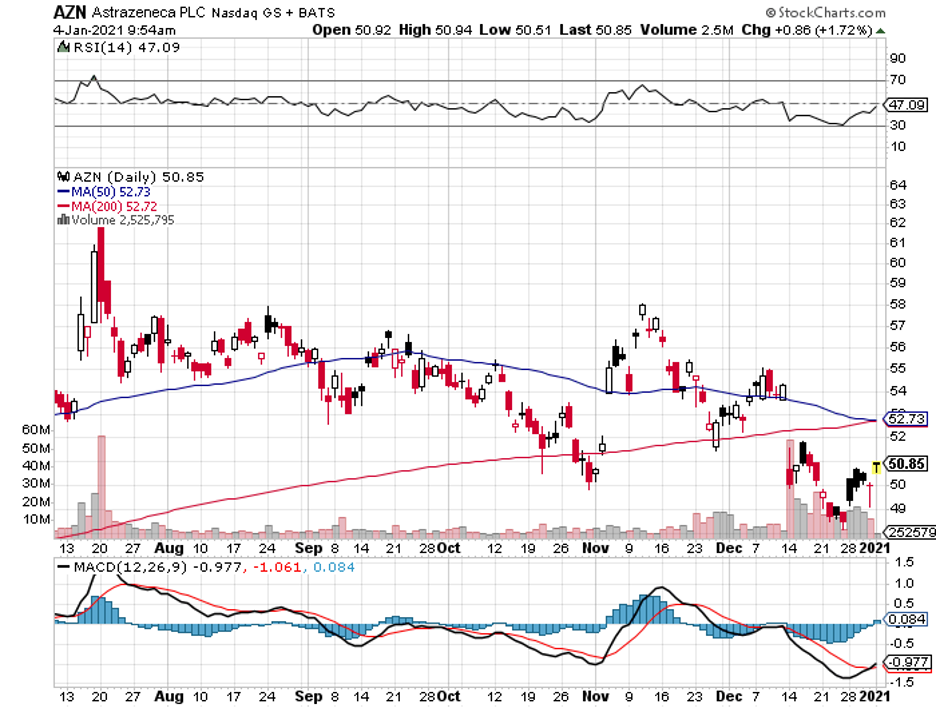
Mad Hedge Biotech & Healthcare Letter
December 15, 2020
Fiat Lux
FEATURED TRADE:
(DON’T BUY ASTRAZENECA FOR ITS COVID-19 VACCINE)
(AZN), (PFE), (MRNA), (ALXN)
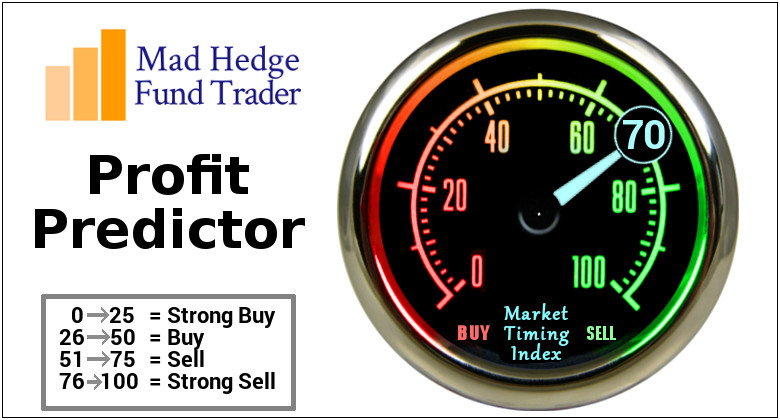
AstraZeneca (AZN) is one of the leaders in the COVID-19 vaccine race, but you wouldn’t have guessed it by observing the stock price in the past months.
The indifference might be rooted from the company’s recent issues with its vaccine candidate, AZD1222, which includes dosing errors and lack of transparency on their trial data.
In comparison, frontrunners like Pfizer (PFE) and Moderna (MRNA) have been gaining back to back approval from the FDA and even from investors.
Let me tell you why this doesn’t really matter for AstraZeneca anyway.
For one, AstraZeneca won’t even make a profit from its COVID-19 vaccine candidate. In fact, the British drugmaker pledged earlier this year that it will sell AZD1222 at no profit.
So, what is the financial benefit of AstraZeneca’s vaccine?
The potential big win from this COVID-19 program is not from AZD1222 itself, but from AstraZeneca’s long-acting antibody cocktail.
This treatment could be the solution needed to prevent the progression of diseases among patients who are already infected with the virus. It can also be used as a preventive measure, which can last up to 12 months, for those who cannot take a vaccine.
If AZD1222 gains approval, then this COVID-19 vaccine is projected to add $3 billion—an impressive 30%—to AstraZeneca’s 2021 profits.
The approval of this technology would also fall nicely in place with the rest of AstraZeneca’s plans.
Since the start of 2020, AstraZeneca has made it clear that it would start pivoting to focus on rare diseases.
Its latest plan towards developing this expertise is the $39 billion acquisition of biotechnology company Alexion Pharmaceuticals (ALXN).
Here’s the nitty-gritty of this massive merger.
The $39 billion price tag comes in the form of cash and stock, putting each share at $175. Alexion shareholders will get $60 in cash on top of 2.1 AstraZeneca shares for every share they own. Aside from that, Alexion will own 15% of the newly formed company.
If everything goes according to plan, then the deal will be completed by the third quarter of 2021.
This acquisition will significantly expand the R&D programs of AstraZeneca, especially its highly specialized and rare diseases sectors.
This combined company is estimated to rake in double-digit growth in its revenue through 2025, with the company potentially gaining significant synergies of roughly $500 million annually – a fair price that could easily justify the premium price AstraZeneca paid for the merger.
AstraZeneca should also be able to expect double-digit increases in its core EPS accretion for the first three years, with the company realistically anticipating a strong FCF with a strong investment-grade rating.
Now, let’s take a look at what Alexion brings to the table.
Alexion is one of the most promising biotechnology companies to date, which managed to achieve significant growth since its IPO. From 2017 to 2020, the company managed to boost its annualized revenue by 20%, growing from $3.5 billion to $6 billion.
With a market capitalization of $34.21 billion, it has invested a significant part of its budget to the development of rare disease drugs.
The most popular products in Alexion’s portfolio are chemotherapy drugs Ultomiris and Soliris, which generated $4.3 billion in combined sales in 2019 alone.
For 2020, sales of these two treatments are expected to rise by 17% to reach $5 billion.
Prior to this deal with AstraZeneca, Alexion has been engaged in an acquisition spree since 2018.
It managed to snap up four smaller biotechnology companies for $4 billion in total, with its $1.4 billion purchase of Portola Pharmaceuticals as its most recent deal.
Truth be told, the performance of Alexion’s rare disease treatments in the market didn’t skip a beat despite the pandemic in 2020.
In fact, these products have been substantially outperforming expectations that the company itself presented in January.
With this merger, AstraZeneca will gain access to Soliris and its widely successful follow-on medication Ultomiris.
Apart from these mega-blockbuster drugs, AstraZeneca will also get its hands on a handful of treatments for rare metabolic diseases, making the company on pace to rake in roughly $840 million in revenue for this year alone.
With all these plans in place, it’s clear that the strongest reason to buy AstraZeneca is not its COVID-19 program.
Buy this stock for the promising long-term prospects not only for rare diseases, but also for its treatments in cancer, cardiovascular diseases, and even diabetes. Buy it as well for its consistent growth, with the company braving the pandemic headwinds and achieving 10% revenue growth and a 16% jump in core EPS to date.
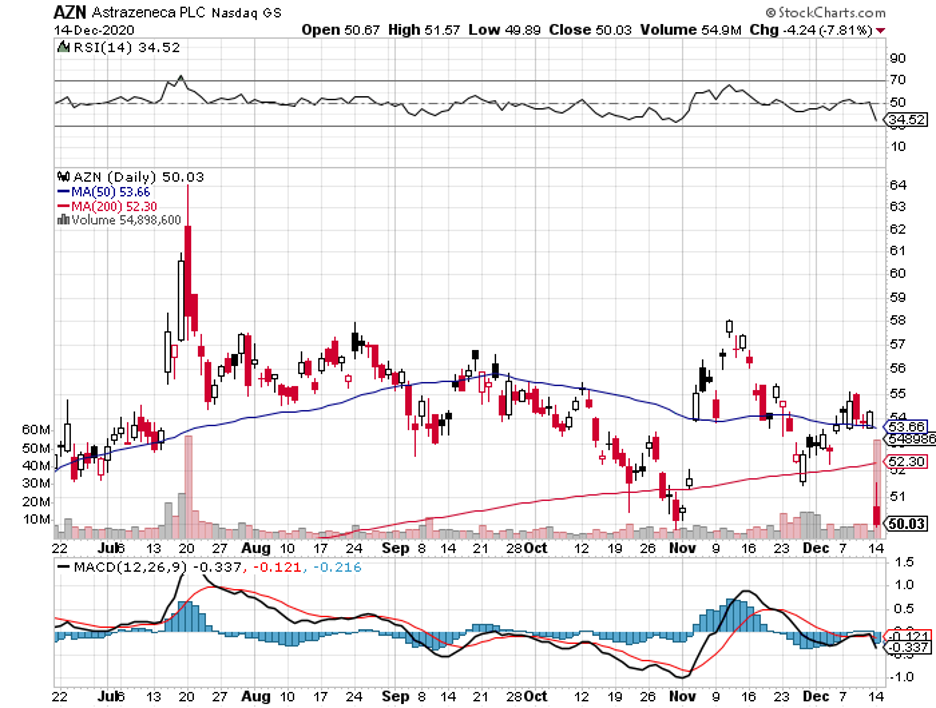
Mad Hedge Biotech & Healthcare Letter
April 23, 2020
Fiat Lux
Featured Trade:
(POST-PANDEMIC STOCKS TO DIVERSIFY YOUR PORTFOLIO)
(BPMC), (NVTA)
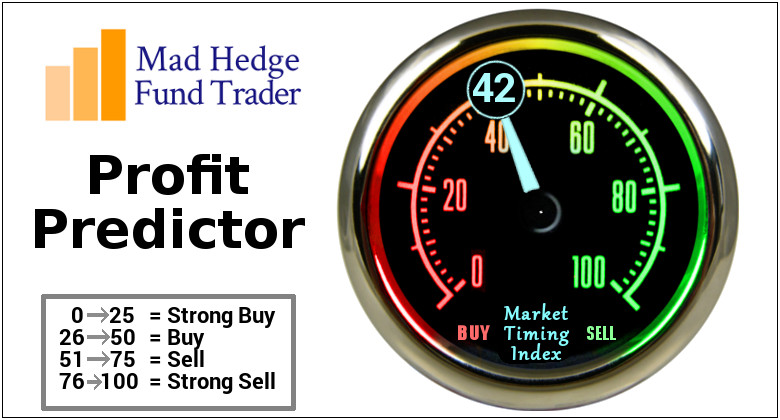
Mad Hedge Biotech & Healthcare Letter
April 21, 2020
Fiat Lux
Featured Trade:
(GETTING YOU BANG PER BUCK WITH ALEXION PHARMACEUTICALS)
(ALXN), (GILD), (RHHBY), (REGN), (SNY)
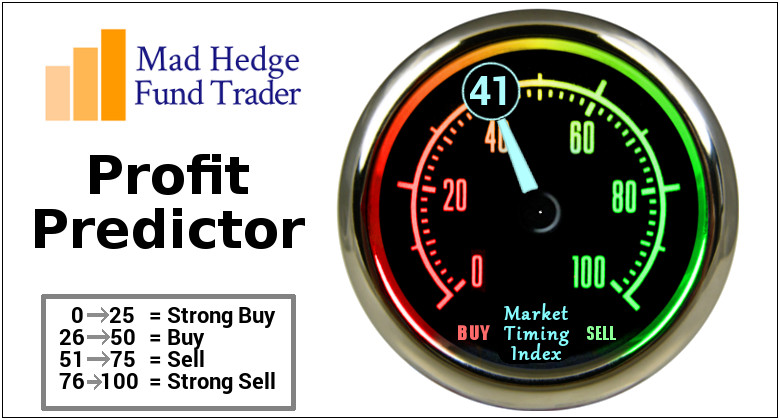
Since nobody can actually control when to get sick or what type of disease to acquire, it makes absolute sense that biotech stocks remain one of the wisest bets if you want to put your hard-earned cash to work.
The question, therefore, is what are the best biotech stocks to buy now?
Looking at the biotechnology stock prices today, I can say that Alexion Pharmaceuticals (ALXN) will give you the most bang for your buck.
For over a decade, this ultra-rare-disease biotechnology company had been regularly valued at roughly 22 to 67 times its cash flow and frequently well above 30 times forward EPS.
Now, you can buy this top biotech stock for less than eight times its Wall Street profit consensus in 2021 and 10 times its cash flow for next year as well. It definitely doesn’t hurt that its PEG ratio is less than 1, categorizing it as an “undervalued” stock today.
However, its attractive pricing isn’t the only thing that’s putting Alexion in the news these days as this biotech company has been active in the race to find a coronavirus cure since early February.
When news about the pandemic broke, Alexion decided to repurpose its rare chronic blood disease bestseller Soliris as a potential COVID-19 treatment since the drug showed promising results on patients with severe pneumonia or acute respiratory distress syndrome.
Alexion’s efforts have been quite promising so far, with the biotech company targeting to commence a Phase 2 study of Soliris within the month. What we know so far is that this experiment will involve 10 patients as part of the proof-of-concept trial.
Apart from Alexion, other top biotech companies repurposing old drugs in search of a COVID-19 cure are Gilead Sciences (GILD) with Remdesivir, Roche (RHHBY) with Actemra, and Regeneron (REGN) and Sanofi (SNY) with Kevzara.
Outside its coronavirus treatment efforts, Alexion actually prides itself on a promising pipeline. To date, three treatments are projected to turn into blockbusters soon.
The first is Strensiq, which is formulated to treat a rare disease commonly known as hypophosphatasia. Patients with this disorder have an enzyme deficiency, making them unable to properly process calcium and phosphorus. As a result, they end up with malformed bones and teeth.
The second treatment is Kanuma, which is for patients suffering from lysosomal acid lipase (LAP) deficiency. People with this condition lack a key enzyme, preventing them from effectively breaking down fats.
Both conditions are extremely rare. Hypophosphatasia affects only 1 in 100,000 people while LAP is suffered by 1 in 40,000 individuals.
The third treatment is Ultomiris, which is widely regarded as Soliris’ successor.
For years, Soliris has been Alexion’s major moneymaker. However, uncertainties on the company’s hold on its patent exclusivity have started to shake investors’ faith in this stock. With one of Soliris’ key patents set to expire in 2021, the biotech company has to brace itself for the onslaught of generic competition.
This is where Ultomiris comes in.
Alexion has been busy migrating its customers to opt for Ultomiris before Soliris’ key patent expires.
To make this offer enticing, the biotech company has priced the newer drug to be slightly cheaper than the old blockbuster. Ultomiris costs $458,000 while Soliris is priced at $500,000.
To sweeten the deal further, the newer treatment is only required once every eight weeks. In comparison, Soliris’ treatment schedule is bi-monthly.
Basically, it’s as if Alexion has effectively restarted the clock in its patent exclusivity on this ultra-rare disease indication. The company aims to convert at least 70% of its users by mid-2020.
From a financial point of view, Alexion is performing quite well. Its fourth-quarter report showed that the company earned $1.4 billion in revenues, demonstrating a 23% increase from the same quarter in 2018.
Meanwhile, it raked in $5 billion in full-year sales for 2019. This indicated a 21% jump from its relatively paltry sales of $4.1 billion.
Looking at the metrics, Alexion is one of the surprisingly cheap stocks considering its growth. It also has the added bonus of dominating its chosen ultra-rare disease space.
This is typically a good strategy to avoid competition while also being able to seek high price points for its innovative treatments. The fact that insurers generally cover these treatments all but guarantees that Alexion is secure in terms of cash flow predictability.
Despite the panic induced by the coronavirus market, investing opportunities are everywhere --- if you know where to look.
Alexion is a solid company with strong growth prospects and is selling at a reasonable price. Any opportunistic investor worth his salt would know that this is the ideal time to strike.
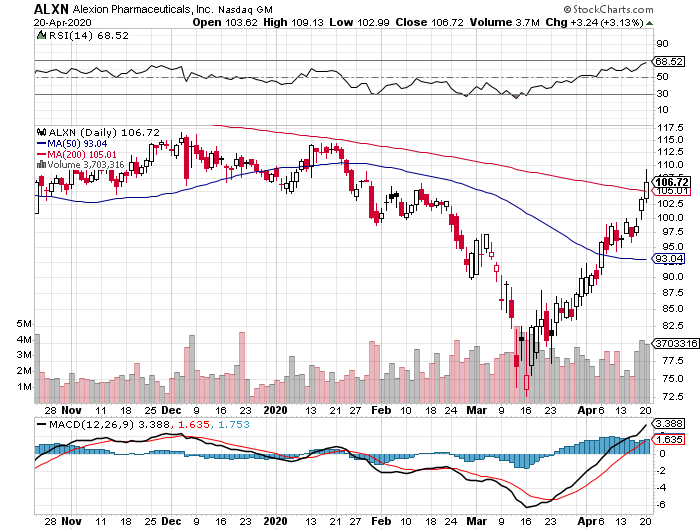
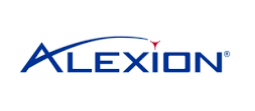
Mad Hedge Biotech & Healthcare Letter
December 12, 2019
Fiat Lux
Featured Trade:
(THE STAMPEDE INTO BIOSIMILAR DRUGS),
(BIIB), (NOVN), (REGN), (ALXN), (NITE), (PFE), (AMGN), (MRK)
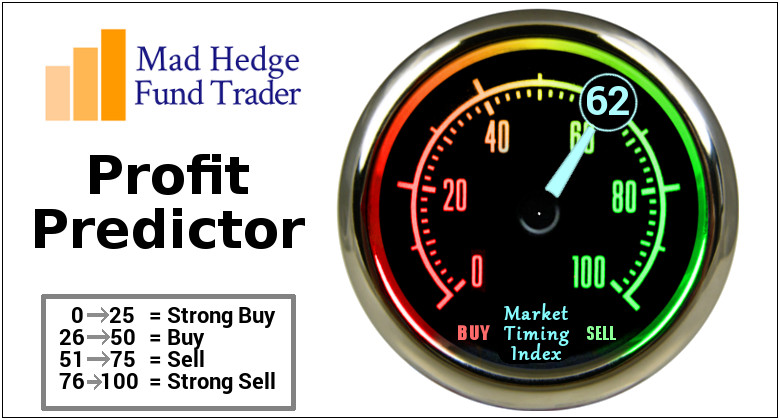
Legal Disclaimer
There is a very high degree of risk involved in trading. Past results are not indicative of future returns. MadHedgeFundTrader.com and all individuals affiliated with this site assume no responsibilities for your trading and investment results. The indicators, strategies, columns, articles and all other features are for educational purposes only and should not be construed as investment advice. Information for futures trading observations are obtained from sources believed to be reliable, but we do not warrant its completeness or accuracy, or warrant any results from the use of the information. Your use of the trading observations is entirely at your own risk and it is your sole responsibility to evaluate the accuracy, completeness and usefulness of the information. You must assess the risk of any trade with your broker and make your own independent decisions regarding any securities mentioned herein. Affiliates of MadHedgeFundTrader.com may have a position or effect transactions in the securities described herein (or options thereon) and/or otherwise employ trading strategies that may be consistent or inconsistent with the provided strategies.
This site uses cookies. By continuing to browse the site, you are agreeing to our use of cookies.
OKLearn moreWe may request cookies to be set on your device. We use cookies to let us know when you visit our websites, how you interact with us, to enrich your user experience, and to customize your relationship with our website.
Click on the different category headings to find out more. You can also change some of your preferences. Note that blocking some types of cookies may impact your experience on our websites and the services we are able to offer.
These cookies are strictly necessary to provide you with services available through our website and to use some of its features.
Because these cookies are strictly necessary to deliver the website, refuseing them will have impact how our site functions. You always can block or delete cookies by changing your browser settings and force blocking all cookies on this website. But this will always prompt you to accept/refuse cookies when revisiting our site.
We fully respect if you want to refuse cookies but to avoid asking you again and again kindly allow us to store a cookie for that. You are free to opt out any time or opt in for other cookies to get a better experience. If you refuse cookies we will remove all set cookies in our domain.
We provide you with a list of stored cookies on your computer in our domain so you can check what we stored. Due to security reasons we are not able to show or modify cookies from other domains. You can check these in your browser security settings.
These cookies collect information that is used either in aggregate form to help us understand how our website is being used or how effective our marketing campaigns are, or to help us customize our website and application for you in order to enhance your experience.
If you do not want that we track your visist to our site you can disable tracking in your browser here:
We also use different external services like Google Webfonts, Google Maps, and external Video providers. Since these providers may collect personal data like your IP address we allow you to block them here. Please be aware that this might heavily reduce the functionality and appearance of our site. Changes will take effect once you reload the page.
Google Webfont Settings:
Google Map Settings:
Vimeo and Youtube video embeds:
